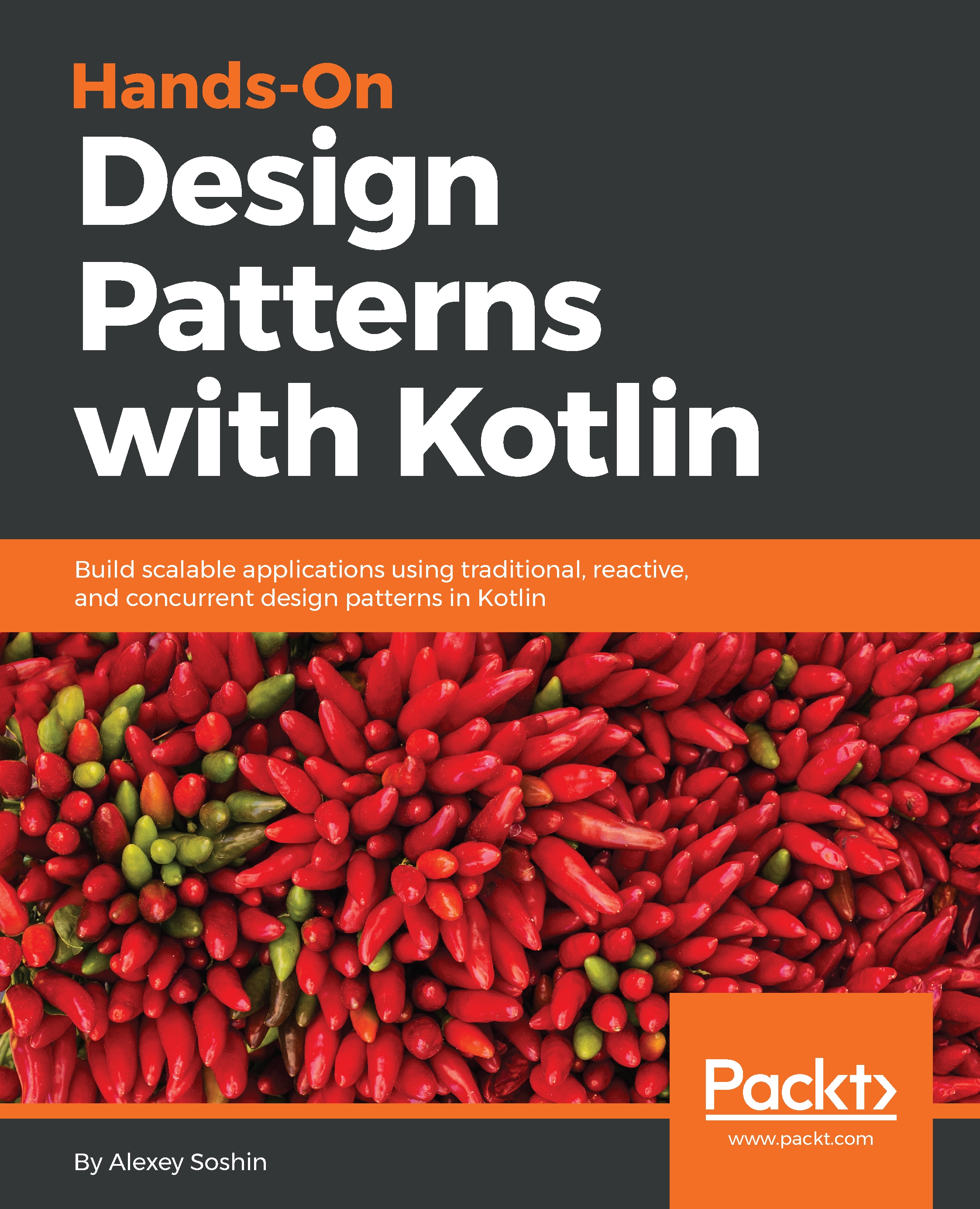This is one misbehaving design pattern. Much like Decorator, it extends object functionality. But, unlike Decorator, which always does at it's told, having a Proxy may mean that when asked, the object will do something totally different instead.
-
Book Overview & Buying

-
Table Of Contents

Hands-On Design Patterns with Kotlin
By :

Hands-On Design Patterns with Kotlin
By:
Overview of this book
Design patterns enable you as a developer to speed up the development process by providing you with proven development paradigms. Reusing design patterns helps prevent complex issues that can cause major problems, improves your code base, promotes code reuse, and makes an architecture more robust.
The mission of this book is to ease the adoption of design patterns in Kotlin and provide good practices for programmers.
The book begins by showing you the practical aspects of smarter coding in Kotlin, explaining the basic Kotlin syntax and the impact of design patterns. From there, the book provides an in-depth explanation of the classical design patterns of creational, structural, and behavioral families, before heading into functional programming. It then takes you through reactive and concurrent patterns, teaching you about using streams, threads, and coroutines to write better code along the way
By the end of the book, you will be able to efficiently address common problems faced while developing applications and be comfortable working on scalable and maintainable projects of any size.
Table of Contents (13 chapters)
Preface
 Free Chapter
Free Chapter
Getting Started with Kotlin
Working with Creational Patterns
Understanding Structural Patterns
Getting Familiar with Behavioral Patterns
Functional Programming
Streaming Your Data
Staying Reactive
Threads and Coroutines
Designed for Concurrency
Idioms and Anti-Patterns
Reactive Microservices with Kotlin
Other Books You May Enjoy
